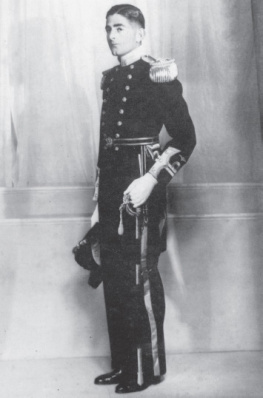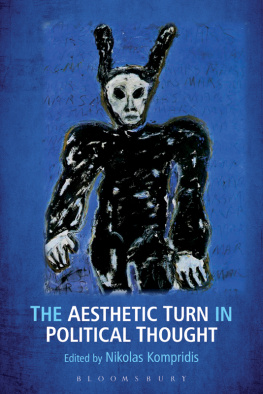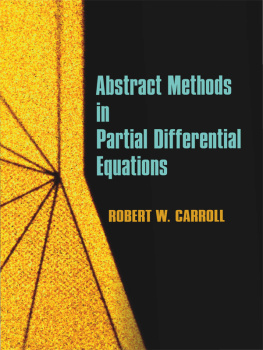David Carrier - Aesthetic Theory, Abstract Art, and Lawrence Carroll
Here you can read online David Carrier - Aesthetic Theory, Abstract Art, and Lawrence Carroll full text of the book (entire story) in english for free. Download pdf and epub, get meaning, cover and reviews about this ebook. publisher: Bloomsbury UK, genre: Art. Description of the work, (preface) as well as reviews are available. Best literature library LitArk.com created for fans of good reading and offers a wide selection of genres:
Romance novel
Science fiction
Adventure
Detective
Science
History
Home and family
Prose
Art
Politics
Computer
Non-fiction
Religion
Business
Children
Humor
Choose a favorite category and find really read worthwhile books. Enjoy immersion in the world of imagination, feel the emotions of the characters or learn something new for yourself, make an fascinating discovery.
- Book:Aesthetic Theory, Abstract Art, and Lawrence Carroll
- Author:
- Publisher:Bloomsbury UK
- Genre:
- Rating:4 / 5
- Favourites:Add to favourites
- Your mark:
- 80
- 1
- 2
- 3
- 4
- 5
Aesthetic Theory, Abstract Art, and Lawrence Carroll: summary, description and annotation
We offer to read an annotation, description, summary or preface (depends on what the author of the book "Aesthetic Theory, Abstract Art, and Lawrence Carroll" wrote himself). If you haven't found the necessary information about the book — write in the comments, we will try to find it.
Aesthetic Theory, Abstract Art, and Lawrence Carroll — read online for free the complete book (whole text) full work
Below is the text of the book, divided by pages. System saving the place of the last page read, allows you to conveniently read the book "Aesthetic Theory, Abstract Art, and Lawrence Carroll" online for free, without having to search again every time where you left off. Put a bookmark, and you can go to the page where you finished reading at any time.
Font size:
Interval:
Bookmark:

Aesthetic Theory, Abstract Art, and Lawrence Carroll
Aesthetics and Contemporary Art
Series Editors: Tiziana Andina and David Carrier
Philosophers and cultural historians typically discuss works of art in abstract terms. But the true significance of art for philosophy, and philosophy for art, can only be established through close analysis of specific examples. Art is increasingly being used to introduce and discuss problems in philosophy. And many works of art raise important philosophical issues of their own. But the resources available have been limited. Aesthetics and Contemporary Art , the first series of its kind, will provide a productive context for that indispensable enterprise.
The series promotes philosophy as a framework for understanding the study of contemporary arts and artists, showcasing researches that exemplify cutting-edge and socially engaged scholarship, bridging theory and practice, academic rigor and insight of the contemporary world.
Editorial Board:
Alessandro Arbo (University of Strasbourg, Fr.), Carla Bagnoli (University of Modena and Reggio), Leeza Chebotarev (Gagosian Gallery), Paolo DAngelo (University of Roma Tre), Nol Carroll (CUNY), Diarmuid Costello (University of Warwick), Maurizio Ferraris (University of Turin), Cynthia Freeland (University of Houston), Peter Lamarque (University of York), Jonathan Gilmore (CUNY), Luca Illetterati (University of Padova), Gao Jianping (Chinese Academy of Social Sciences), Birte Kleemann (Michael Werner Gallery), Joachim Pissarro (CUNY), Sara Protasi (University of Puget Sound), Shen-yi Liao (University of Puget Sound), Ken-Ichi Sasaki (Nihon University), Elisabeth Schellekens (University of Uppsala), Vincenzo Trione (IULM, International University of Language and Communication, Milano).
Forthcoming in the Series:
Aesthetics, Philosophy, and Martin Creed edited by Elisabeth Schellekens and Davide Dalsasso
The Philosophy and Art of Wang Guangyi edited by Tiziana Andina
Visual Metaphor and Contemporary Art by Mark Stall Brandl
For Marianne Novy (and our extended family) and Joachim Pissarro (and his extended family)
Aesthetic Theory, Abstract Art, and Lawrence Carroll
David Carrier

Contents
First and foremost, I warmly thank Lawrence Carroll, and Lucy Jones Carroll for generously taking the time in Venice, Switzerland, Lake Bolsena, Berlin, and in New York, and, also, via e-mail, to patiently answer my many questions. And I thank Tiziana Andina for inviting my collaboration as co-editor of this series of monographs. A short description for the series of books will help to introduce my present analysis:
Philosophers and cultural historians typically discuss works of art in abstract terms. But the true significance of art for philosophy, and philosophy for art, can only be established through close analysis of specific examples. Art is increasingly being used to introduce and discuss problems in philosophy. And many works of art raise important philosophical issues of their own. But the resources available have been limited. Analytic Aesthetics and Contemporary Art , the first series of its kind, will provide a productive context for that indispensable enterprise.
The series promotes philosophy as a framework for understanding the study of contemporary arts and artists, showcasing researches that exemplify cutting-edge and socially engaged scholarship, bridging theory and practice, academic rigor and insight of the contemporary world.
This, then, is not an art historical study, but a philosophical commentary on a contemporary artist. I should acknowledge that I have often been influenced by two of Andinas books Arthur Danto: Philosopher of Pop and The Philosophy of Art: The Question of Definition: From Hegel to Post-Dantian Theories. And I thank Joseph Masheck for reading and commenting on my discussion of his publications in this book.
Carroll has been fortunate to attract numerous highly sympathetic supportersart writers and collectors. Two recent large-scale one-man retrospectives, Ghost House at Museo dArte Moderna di Bologna, Italy, in 2015 and I have longed to move away: Opere/Works 19852017 at Museo Vincenzo Vela, Ligornetto, Switzerland, in 2017, have provided me with instructive magnificent full displays, with catalogues, of his artworks. I have learned from visiting these two very different settings that revealed the amazing range of his art and, also, the strikingly diverse ways in which it functions in dramatically different installations. The essays in the Bologna catalogue by Angela Vettese and Gianfranco Maraniello, and in the Museo Vincenzo Vela catalogue by Gianna Mina, Lara Conte, and Petra Giloy-Hirtz, as well as the notes of Carrolls conversation with Barbara Catoir, have been most helpful. I have learned, also, from the commentaries in his earlier exhibition catalogues by Gilles Altieri, Bruno Cora, Gerhard Finckh, Itzhak Goldberg, Marco Meneguzzo, Terry R. Myers, Robert Pincus-Witten, Concetto Pozzati, Maria Elena Ramos, Charles A. Reily, Laura Mattioli Rossiwhose biographical notes have been essentialJerry Saltz, Dierk Stemmler, and John Yau. And most especially, I have learned from the long, very thorough essay by Richard Milazzo. I have found Carrolls own comments, which will frequently be quoted, highly instructive. And I am indebted, also to the account found in Count Giuseppe Panza di Biumos Memories of a Collector . Carroll is well known within the art world. He has frequent gallery exhibitions, numerous museum shows. And so he has received a certain large amount of intelligent commentary. He is not in any way an outsider. A sociable person, he is not a hermit. But his sensibility is oddly exotic within our contemporary art world. And so far as I can see, he has no followersand, as yet, no imitators.
I thank Colleen Coalter, Helen Saunders, and Leela Ulaganathan at Bloomsbury, and also an anonymous reader, who have provided patient, supportive editing. Gianna A. Mina, director of Museo Vincenzo Vela, Switzerland, kindly published my essay (2017), which introduced some themes developed in this book. At the Panza collection, in Varese, Italy, thanks to Rosa Giovanna Magnifico Panza, M. Giuseppina Caccia Dominioni Panza, Alessandro Panza, Francesca Guicciardi, Cristiana Caccia Dominioni and Pietro Caccia Dominioni, I was able to see Carrolls permanent installation, and participate in a Swiss TV movie devoted to his art. And, finally, I met Carroll many years ago at the Studio School, New York, my best host institution, when he and Sean Scully attended my lecture. Like many good things in my life, this book thus owes a real debt to Sean.
Several years ago, when working on an earlier projectmy book The Contemporary Art Gallery: Display, Power and Privilege , coauthored with Darren JonesPhong Bui, editor at Brooklyn Rail , gave me a recommendation. I didnt get the grants I applied for, but I got something that intellectually is of far greater valuean account of my career, in suggestive terms, which until then I had not thought through. Phong pointed out that my various books, Principles of Art History Writing (1991); Museum Skepticism: A History of the Display of Art in Public Galleries (2006); A World Art History and Its Objects (2008); and The Contemporary Art Gallery: Display, Power and Privilege (2016), constitute a system, a systematic account of the nature of art and its presentation. I am therefore extremely grateful to him, for before this volume was written, he in effect suggested to me how to organize it. I learnt from his comments that a fully adequate, proper account of Carrolls painting should draw upon my full intellectual resources, looking back to my graduate training in philosophy.
Font size:
Interval:
Bookmark:
Similar books «Aesthetic Theory, Abstract Art, and Lawrence Carroll»
Look at similar books to Aesthetic Theory, Abstract Art, and Lawrence Carroll. We have selected literature similar in name and meaning in the hope of providing readers with more options to find new, interesting, not yet read works.
Discussion, reviews of the book Aesthetic Theory, Abstract Art, and Lawrence Carroll and just readers' own opinions. Leave your comments, write what you think about the work, its meaning or the main characters. Specify what exactly you liked and what you didn't like, and why you think so.











